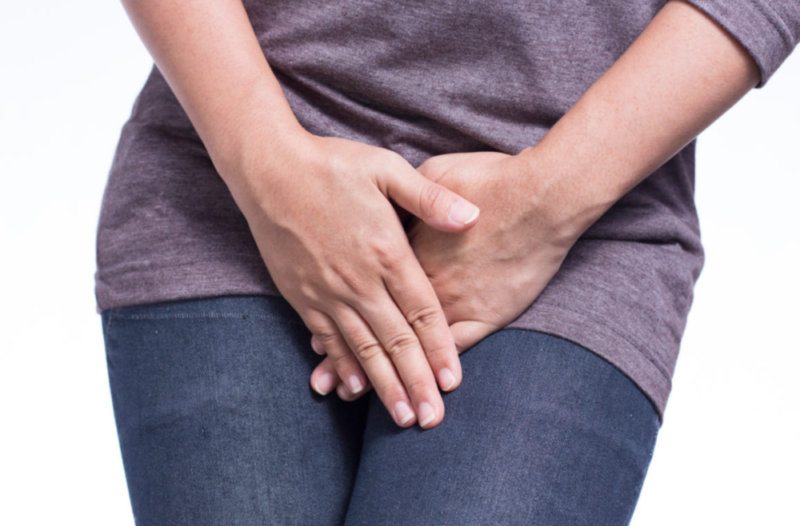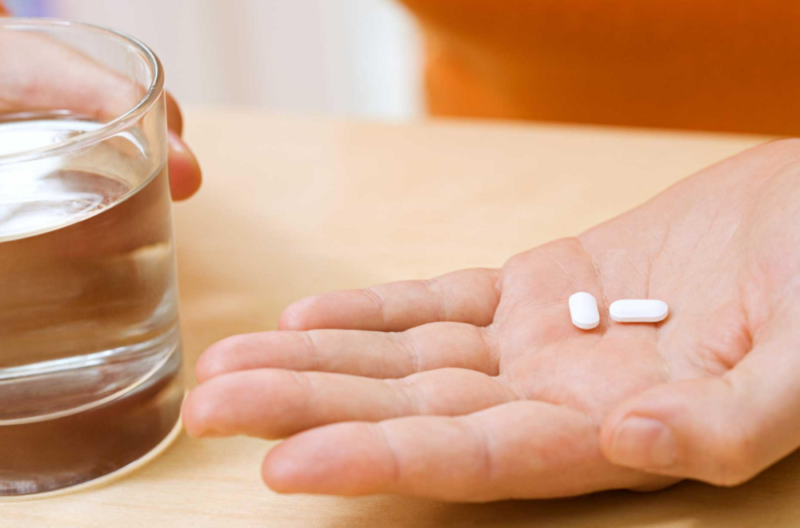The vaginal microflora of each woman is distinguished by individual characteristics. Vaginal dysbiosis is a violation of a stable composition, an imbalance in the microbial flora of an organ. This condition is often asymptomatic, can lead to the development of diseases of the reproductive sphere of the female body.
Material Content:
Causes of vaginal dysbiosis
The vagina is a hollow tubular-muscular organ, part of the female reproductive system. Connects the external genitalia of a woman with the uterus. About 300 species of microorganisms inhabit the vagina. This is much smaller compared to the intestines, oral and nasal cavities.
The microflora of the vagina of a healthy woman maintains relative constancy. Up to 98% of the composition falls on Dederlein sticks and other beneficial microorganisms. Saprophytic bacteria use dead cells from the vaginal cavity to feed. Lactobacilli convert glycogen produced by squamous epithelial cells of the mucous membrane under the influence of estrogen into lactic acid. There is a decrease in the pH of vaginal secretion to 3.8-4.4.
The acidic environment of the vagina prevents the development of pathogens.
Other substances secreted by normal microflora also possess antimicrobial activity: bacteriocins, hydrogen peroxide, nitric oxide. A high level of estrogen in women of childbearing age contributes to the thickening and hardening of the vaginal wall, which makes it difficult to introduce pathogenic microbes.
Initially, only the species Lactobacillus acidophilus vaginalis was attributed to Dederlein sticks. Later it was proved that other types of bacteria perform a protective function.The main representatives of the healthy part of the vaginal microbiota are 4 species of lactobacillus (Lactobacillus).
Vaginal dysbiosis (dysbiosis) is a violation of the normal qualitative and quantitative composition of the organ microbiota.
The number of Dederlein sticks decreases, the acidity of the medium changes significantly. The protective effect disappears, conditionally pathogenic bacteria multiply intensively.
Some of the potentially pathogenic microbes are always present in the secretion of the vagina. Approximately 2% of the composition of vaginal microflora falls on opportunistic microorganisms: fungi, streptococci, staphylococci, gardnerella, mycoplasma. Usually they are harmless, since beneficial bacteria compete with them. Due to the predominance of lactobacilli, the development of pathologies is restrained.
Symptoms and signs
The female body does not always cope with changes in the vaginal microflora. However, the clinical signs of dysbiosis are most often detected by chance. Symptoms of vaginal dysbiosis in the acute course of the process are more pronounced. Chronic dysbiosis is asymptomatic in 20–37% of women.
Normal vaginal discharge is clear or milky white, odorless. Leucorrhoea have a neutral reaction, do not irritate the mucous membrane. Dysbiosis is accompanied by constant discharge of gray-white color, almost always with a "fishy" smell. In the chronic course of the process, whites acquire a creamy consistency, the color changes to yellowish-green.
Redness, swelling of the mucous membrane, vaginal itching, burning sensation, urination disorder are uncharacteristic signs of dysbiosis.
With trichomoniasis, the discharge is greenish, foamy, smelling bad, with a fungal infection - white, viscous, odorless. A whitish coating appears on the labia and vaginal wall. Beta hemolytic streptococcus causes the appearance of greenish-yellowish discharge that does not smell like fish.
Diagnostic measures
Symptoms of vaginal dysbiosis are found in every second gynecologist patient. A gynecological examination is required to confirm the diagnosis.
Diagnostics includes the identification and evaluation of the following symptoms:
- Characteristic color, smell, consistency of discharge.
- Determination of pH of the vagina. The acidity of the medium is determined using special test strips. With dysbiosis, the pH value exceeds 4.5.
- Positive amine test result. An alkaline solution (KOH, 10%) acts on the vaginal secretion. The appearance of a fishy smell is a sign of dysbiosis.
- The presence of "key" cells in a vaginal smear. Microscopy in a laboratory allows you to detect epithelial cells dotted with bacteria, helps to assess the quantitative composition of microflora.
The diagnosis of bacterial vaginosis is made if the patient has at least three symptoms from the list.
Analysis Femoflor - a comprehensive study of the microbiota of the urogenital tract of a woman. The technique allows you to diagnose dysbiosis and identify infectious agents in vaginal secretions. In the laboratory, the number of microorganisms is determined (total bacterial mass), saprophytic, opportunistic and pathogenic microorganisms are detected. Screening for 16 microbes.
Bacterial vaginosis during pregnancy
The number of lactobacilli can not only decrease, but also increase under the influence of hormonal changes in the body of a pregnant woman. If thickening of the epithelium occurs, then the accumulation of glycogen and the number of lactobacilli increase. In a too acidic environment, beneficial microorganisms cannot multiply further.
Hormonal changes are one of the causes of the appearance or worsening of symptoms of vaginal dysbiosis during pregnancy.
Bacterial vaginosis is a pathological imbalance of vaginal microflora. There is an increased growth of anaerobic bacteria. Colonies of Gardnerella vaginalis, Escherichia coli, Klebsiella are increasing.It is believed that the appearance of gardenerella biofilms is the main prerequisite for the development of bacterial vaginosis. Lack of therapy for infectious diseases of the urogenital tract can cause premature birth.
Treatment of vaginal dysbiosis
The body of a woman is able to independently compensate for changes that occur with dysbiosis. However, with a decrease in immunity, hormonal imbalance and other health problems, “good” bacteria are completely replaced by pathogens.
Treatment of vaginal dysbiosis is two-stage. First, it is necessary to suppress the development of opportunistic flora. Antibacterial therapy is prescribed in accordance with the results of a smear analysis. Local preparations are used: suppositories, clindamycin gels, dalacin clindacin.
Medications with metronidazole for the treatment of gardnerellosis in women:
- Trichopolum (vaginal tablets);
- Rosamet or Rosex (cream);
- Metrogil (gel);
- Flagil (candles).
The local antiseptic chlorhexidine helps with itching, burning and pain. The active substance is contained in vaginal suppositories and hexicon solution.
If vaginal dysbiosis is combined with a fungal infection, then antimycotic drugs Clotrimazole, Nystatin (creams and suppositories) are prescribed. Antifungal treatment is long, if necessary, lasts several months.
At the second stage, the normal composition of the vaginal microbiota is restored. Hormones, immunomodulators, antihistamines are used to correct existing immune and hormonal disorders.
Local products containing lactic and other acids, probiotics, are used to normalize microflora and pH values of the vagina. Dosage forms and names of medicines: Lactogel gel, Atzilact suppositories, Femileks, Bifidumbacterin, Vaginorm-S vaginal tablets. Such drugs can be used even during pregnancy and lactation. In addition, probiotics for oral administration are prescribed.
In the first half of pregnancy, antibiotic intake is contraindicated. Allowed local means are used - safe, fast acting. Systemic antibiotic therapy can be carried out in the second half of pregnancy.
Nutrition and Diet
The composition of the intestinal and vaginal microflora reflects the general condition of the body. You must adhere to a healthy diet. There are many products that contribute to strengthening the general and local immunity, maintaining the normal composition of the microbiota.
Diet has an effect on hormonal status. The balance of hormones in a woman’s body is important for maintaining the health of the intimate sphere and normalizing the composition of the vaginal microflora. A low fat and refined carbohydrate diet helps prevent vaginal dysbiosis.
It is recommended to eat:
- foods rich in vitamins A and E (liver, vegetable oils, carrots, spinach, sweet potato);
- fruits and vegetables containing increased amounts of vitamin C (bell peppers, kiwi, citrus fruits);
- zinc-containing products (oysters, beef, lamb, chicken, legumes, whole grains).
Natural yogurt contains probiotics mainly lactobacilli and bifidobacteria. The use of the product has a beneficial effect on the balance of the intestinal microbiota, which significantly affects the vaginal microflora. Normalization of the qualitative and quantitative composition of the bacteria inhabiting the colon reduces the likelihood of microbial pathogens entering and developing into the vagina. The pH level necessary for the existence of Dederlein sticks and the suppression of infectious agents is maintained.
Garlic is a powerful antiseptic, natural antibiotic and antifungal. The consumption of fresh cloves, as well as the addition of ground spices in dishes, helps maintain the microflora of the oral cavity, intestines, vagina and skin in good condition. After consuming spices, bad breath appears.You can get rid of discomfort: brush your teeth, drink milk, chew parsley root.
Regular inclusion of kefir, yogurt, yogurt, sauerkraut in the diet helps to normalize the intestinal flora, which is useful for combating vaginal dysbiosis.
Polyphenols in tea, many fruits and vegetables support the immune system, improve metabolism, stimulate blood flow to the digestive tract, genitals. Good blood supply is the key to the normal functioning of the body, a good state of the intestine, and self-cleaning of the vagina.
Possible complications
The absence or small number of Dederlein sticks increases the likelihood of the development of opportunistic flora, opens the "gate" for infection. First of all, the risk of damage to the pelvic organs increases.
Bacterial vaginosis enhances susceptibility to diseases:
- sexually transmitted infections, including HIV / AIDS;
- human papilloma virus (HPV);
- genital herpes (HSV type 2;
- vulvovaginal candidiasis.
Bacterial vaginosis during pregnancy poses a threat of miscarriage and premature birth, rupture of the bladder, wound infection, postpartum endometritis.
Prevention
Risk factors for changes in the vaginal flora are a decrease in local immunity, hormonal imbalance, the use of highly alkaline soap, harmful to lactoflora, and the use of antibiotics for intimate hygiene. Although vaginal dysbiosis usually responds well to treatment, it is better to prevent adverse changes in the vaginal microflora.
After bowel movement, the perineum should be wiped with toilet paper in the direction from the vagina to the anus to prevent the spread of bacteria from the rectum to the genitals.
Do not abuse antiseptics, fragrant soaps, scented toilet paper. Do not use soap for washing the genitals and skin. Underwear is recommended to be washed in warm water, ironed with a hot iron after washing. Avoid wearing strings and tight trousers.
Protected sex is the best prevention of trichomoniasis and other sexually transmitted infections.




















